Creating a relaxing and functional bedroom is essential for a better night’s sleep, and minimalistic bedroom design offers a perfect balance between simplicity and sophistication. By focusing on clean lines, neutral tones, and purposeful design, minimalist bedrooms transform your sleeping space into a serene retreat. Whether you’re aiming for a modern minimalist look or blending styles like Scandinavian or Bohemian, the goal is to foster a sense of calm and organization. This guide explores everything you need to know about achieving a minimalist bedroom design, from decluttering strategies to modern design ideas that suit every room size. Discover how minimalistic bedroom design not only enhances your sleep quality but also brings a fresh, contemporary vibe to your home. With tips on selecting minimalist bedroom furniture, incorporating subtle art, and creating a cozy ambiance, this article is your ultimate resource for elevating your sleep space.
Key Takeaways
– Hygge Bedroom: Incorporate soft, ambient lighting, high-quality textiles, and a calming color palette to create a cozy, inviting space.
– Scandinavian Design: Opt for a minimalist approach with neutral tones, natural materials, and clean-lined furniture to achieve a functional and serene retreat.
– Feng Shui Principles: Declutter, choose harmonious colors, strategically place your bed, and maintain a clean environment to promote relaxation and positive energy flow.
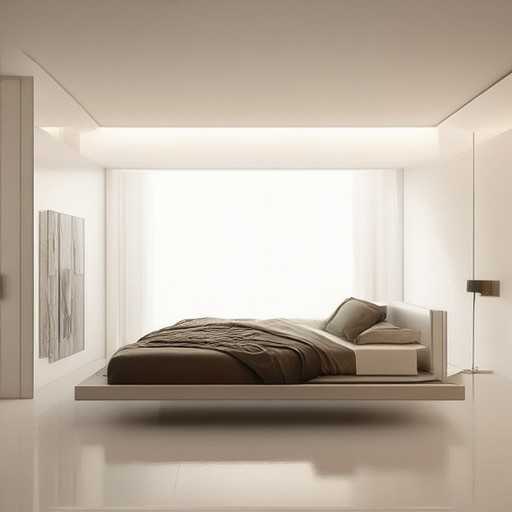
How to Make a Bedroom Minimalist
- Start by decluttering the room, removing unnecessary items to create a clean foundation.
- Choose a cohesive color palette, sticking to neutrals or soft tones to maintain simplicity and calmness.
- Incorporate multi-functional furniture pieces that serve several purposes, like an ottoman that doubles as storage.
- Add subtle lighting features, such as wall-mounted sconces or a simple table lamp, to enhance the space without clutter.
- Use minimal bedding, opting for a streamlined bed frame and a lightweight duvet or blanket.
- Accessorize sparingly with timeless pieces like a vintage clock, a few decorative trays, or a small plant.
- Consider adding large windows or sheer curtains to bring in natural light and create an airy feel.
- Focalize on the bed as the centerpiece, ensuring it’s positioned against a blank wall to draw attention inward.
- Install built-in storage solutions, such as shelves or cabinets, to keep the room organized without visible clutter.
- Balance the space by avoiding too many decorative elements; less is often more in minimalist design.
For more tips and inspiration, explore our minimalist interior design guide or check out our collection of DIY projects .
How to Create a Cozy and Simple Bedroom
To transform your bedroom into a cozy and simple retreat, focus on creating a space that feels warm, inviting, and comfortable. Here’s a step-by-step guide:
- Choose a Calming Color Palette : Opt for soft, neutral tones like muted greens, warm grays, or earthy tones to create a restful atmosphere. These colors promote relaxation and help create a soothing environment.
- Invest in Comfortable Bedding : Select high-quality sheets, a supportive mattress, and a fluffy blanket or quilt. Add decorative pillowcases to elevate the look and feel. Don’t forget to layer in different textures for added comfort and visual interest.
- Layer Lighting Thoughtfully : Incorporate a combination of task lighting, ambient lighting, and accent lighting. Use a table lamp for reading, string lights for a cozy ambiance, and natural light during the day to create a balanced illumination.
- Add Personal Touches : Introduce personal items like framed photographs, artwork, or plants to make the space feel unique and lived-in. Low-maintenance plants like succulents or small potted plants can add life to the room.
- Keep Clutter at Bay : Organize your space efficiently with storage boxes, baskets, or drawer organizers. A minimalist approach ensures the room remains tidy and clutter-free, enhancing its cozy feel.
- Use Textiles for Warmth and Texture : Incorporate additional layers like throws, rugs, and curtains. A cozy rug placed near the bed adds warmth and texture, while layered textiles like a throw over the duvet enhance comfort.
- Optimize Furniture Placement : Arrange furniture to maximize comfort and functionality. Place a bench at the foot of the bed for added style and practicality. Keep nightstands within reach and consider a dresser near the door for easy access to essentials.
- Consider Color Coordination : Pair darker walls with lighter furniture to create a snug feel, or opt for lighter walls with darker accents for a cozier atmosphere. A feature wall with a statement color or wallpaper can add visual interest without overwhelming the space.
- Create a Restful Layout : Ensure the room isn’t overcrowded and allows for easy movement. Use area rugs to define spaces and add warmth, placing a small rug under the bed and larger ones elsewhere to enhance the overall feel.
- Match Personal Care Items : Consistently choose matching bath towels, washcloths, and shower curtains that align with your bedding for a cohesive look, contributing to the overall cozy ambiance.
By focusing on these elements, you can create a simple yet inviting bedroom that feels like a sanctuary away from the world.
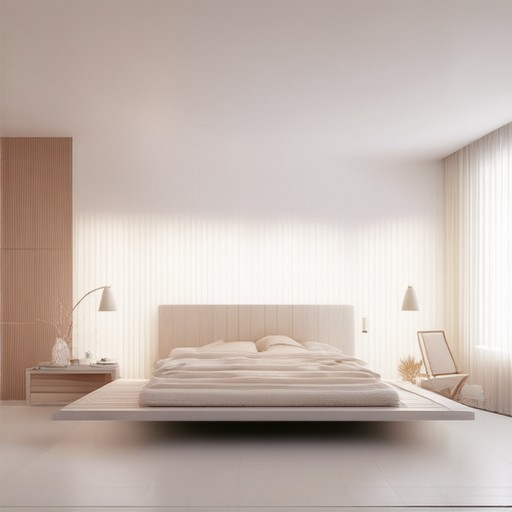
What Art Suits a Minimalist Bedroom?
A minimalist bedroom is characterized by clean lines, neutral tones, and simplicity. The artwork chosen should reflect these principles, creating a harmonious and calming atmosphere. Here are some ideal choices for minimalist bedroom art:
- Abstract Art : Opt for abstract pieces that feature geometric shapes or soft curves. These works add a modern touch without overwhelming the space.
- Black-and-White Photography : Monochromatic photographs offer a bold statement while maintaining a sleek aesthetic. They pair well with any neutral color scheme.
- Nature-Inspired Art : Simple nature motifs, such as stripes or dots, introduce texture without clutter. They bring a serene vibe to the room.
- Furniture-Inspired Art : Wall art that mimics furniture lines or silhouettes can create a cohesive look, tying the room’s decor together.
- Monochrome Art : Black-and-white or grayscale pieces are ideal for minimalist spaces, offering a timeless appeal and low-maintenance ease.
Tips for Choosing the Right Art
- Size Matters : Choose artwork that is proportional to the room’s dimensions to avoid overpowering the space.
- Placement : Position art in a focal area, such as above the bed or as a centerpiece on a large wall.
- Balance : Ensure the piece complements the room’s color palette and style, avoiding busy or detailed designs.
Conclusion
By selecting artwork that aligns with minimalist principles, you can create a bedroom that feels tranquil and stylish. Whether opting for abstract pieces, monochromatic photography, or nature-inspired motifs, the right art enhances the space while maintaining its clean, uncluttered appearance.
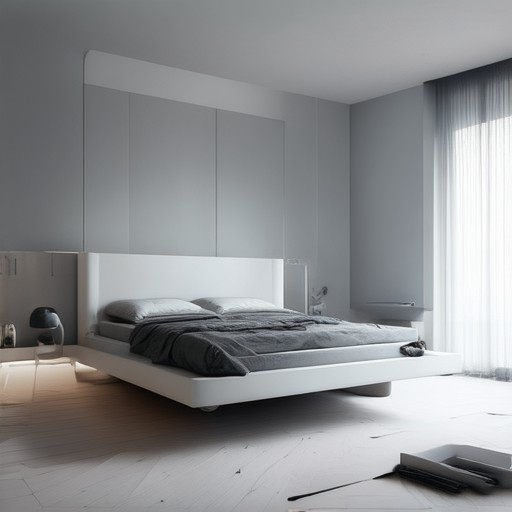
How to Create a Hygge Bedroom
To achieve a hygge bedroom, focus on creating a space that feels cozy, comforting, and inviting. Here’s a step-by-step guide:
- Define Hygge : Hygge is a Danish concept emphasizing comfort, warmth, and well-being. Incorporate these principles into your bedroom design.
- Lighting :
- Use soft, ambient lighting. Table lamps, wall sconces, or string lights can create a warm and inviting atmosphere.
- Opt for low-level lighting to reduce glare and maximize relaxation.
- Textiles :
- Invest in high-quality bedding, such as down duvets, feather pillows, and breathable cotton sheets.
- Add texture with throws, blankets, or decorative cushions.
- Consider hypoallergenic options for a comfortable night’s sleep.
- Color Palette :
- Choose calming, neutral tones like beige, cream, or muted pastels.
- Use warm accents like deep navy or charcoal gray to add contrast and warmth.
- Personal Touches :
- Incorporate personal items like artwork, photographs, or meaningful objects to create a sense of familiarity.
- Layer textures with rugs, throws, and bedding for added comfort and visual interest.
- Furniture Placement :
- Ensure furniture placement allows for ease of movement and creates a welcoming seating area.
- Consider adding a comfortable chair or bench at the foot of the bed for reading or relaxation.
- Functionality :
- Keep the bedroom clutter-free with storage solutions like baskets, trays, or built-in shelves.
- Ensure the room has a functional layout that supports restful sleep and activities.
By thoughtfully incorporating these elements, you’ll create a hygge bedroom that promotes comfort and well-being, offering a sanctuary retreat for relaxation and rest.
How to Create a Scandinavian Bedroom
A Scandinavian bedroom is characterized by its minimalist design, neutral palette, and functionality. Here’s a step-by-step guide to achieving this look:
- Choose a Color Palette
- Opt for soft, muted tones like beige, light gray, or pale blue.
- Incorporate white or cream accents for brightness and contrast.
- Use a neutral base color for walls, floors, and bedding.
-
Bedding Essentials
- Invest in a high-quality duvet or comforter in natural materials like cotton or linen.
- Add a fitted sheet for a sleek look.
- Consider a lightweight blanket or throw for added warmth and texture.
-
Lights Over Bed
- Use a statement-making pendant light or wall sconce with a warm tone.
- Opt for a minimalist design that complements the room’s aesthetic.
-
Furniture Selection
- Select pieces with clean lines and simple shapes.
- Choose wood tones like oak or birch for natural warmth.
- Mix in industrial or mid-century modern styles for character.
-
Textile Details
- Add woven blankets or throws for texture.
- Use decorative pillows in neutral tones or patterns.
- Consider natural fibers like jute or sisal for window treatments.
-
Personal Touches
- Display artwork or photographs in simple frames.
- Place a small plant or succulent for a touch of nature.
- Keep surfaces clutter-free for a tidy, Scandinavian feel.
-
Accessorize Thoughtfully
- Use utility baskets or trays for organization.
- Add a reading lamp by the bed for functionality.
- Incorporate subtle metallic accents for a refined look.
By focusing on minimalism, natural textures, and neutral hues, you can easily transform your bedroom into a Scandinavian-inspired retreat. For more tips on creating a cohesive space, explore our Scandinavian Interior Design guide.
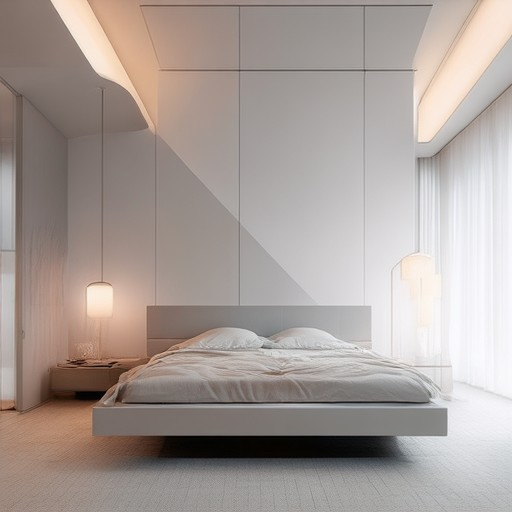
Feng Shui in Bedroom: A Comprehensive Guide
Feng Shui, the ancient Chinese art of arranging spaces to optimize energy flow, can significantly enhance the ambiance and functionality of your bedroom. By incorporating Feng Shui principles, you can create a harmonious environment that promotes relaxation, improves sleep quality, and fosters a sense of balance. Below are expert tips to achieve Feng Shui in your bedroom effectively.
1. Declutter and Simplify
Your bedroom should feel restful and calming. Start by eliminating clutter, as it disrupts the smooth flow of energy. Organize your belongings into neat piles or storage solutions, ensuring everything has its place. Clearing unnecessary items helps in creating a serene atmosphere conducive to sleep and relaxation.
2. Choose Harmonious Colors
Color plays a crucial role in Feng Shui. Opt for soft, natural tones like muted greens, warm browns, and calming blues. These colors are believed to promote relaxation and emotional balance. Avoid harsh or vibrant colors, as they can create an energizing effect that may interfere with sleep.
3. Bed Placement
The position of your bed is essential. Place it away from windows, doors, and electronic devices to minimize external energies. According to Feng Shui principles, the bed should not face corners or sharp angles, as this can lead to negative energy drain. Ensure your bed is positioned against a wall opposite another wall for stability and balance.
4. Create a Restful Environment
Introduce elements that foster relaxation. Consider adding plants or water features, as they are known to enhance the flow of Chi. Natural light during the day can be beneficial, but ensure your bedroom remains dark and quiet at night. Soft lighting, such as table lamps or candles, can create a soothing ambiance.
5. Balance the Space
Avoid extreme asymmetry or imbalance in your bedroom decor. Symmetrical arrangements help in maintaining harmony. Use pairs of identical objects, such as lamps or artwork, to create a balanced look. This principle ensures that the energy in the room flows smoothly.
6. Incorporate Curves and Soft Lines
Curved furniture and soft, flowing lines can help counteract the sharp edges and angles present in most bedrooms. Rounded mirrors or curved headboards can transform the space into a more inviting and nurturing environment.
7. Use High-Quality Textiles
Textiles like silk, cotton, and wool are excellent for absorbing and dissolving negative energy. Drapery, such as curtains or blankets, can act as a protective barrier, filtering out unwanted energies from the outside while retaining the positive ones within.
8. Regular Cleaning and Maintenance
Maintaining a clean and orderly bedroom is essential for Feng Shui. Regular dusting, vacuuming, and washing bedding can help remove stale energy and promote fresh beginnings. This routine ensures that your bedroom remains a sanctuary of positivity and renewal.
Conclusion
By thoughtfully applying Feng Shui principles to your bedroom, you can create a space that nurtures your physical and emotional well-being. Remember to keep it simple, focused, and aligned with your personal goals. With consistent care and attention, your bedroom will become a haven of peace and harmony.

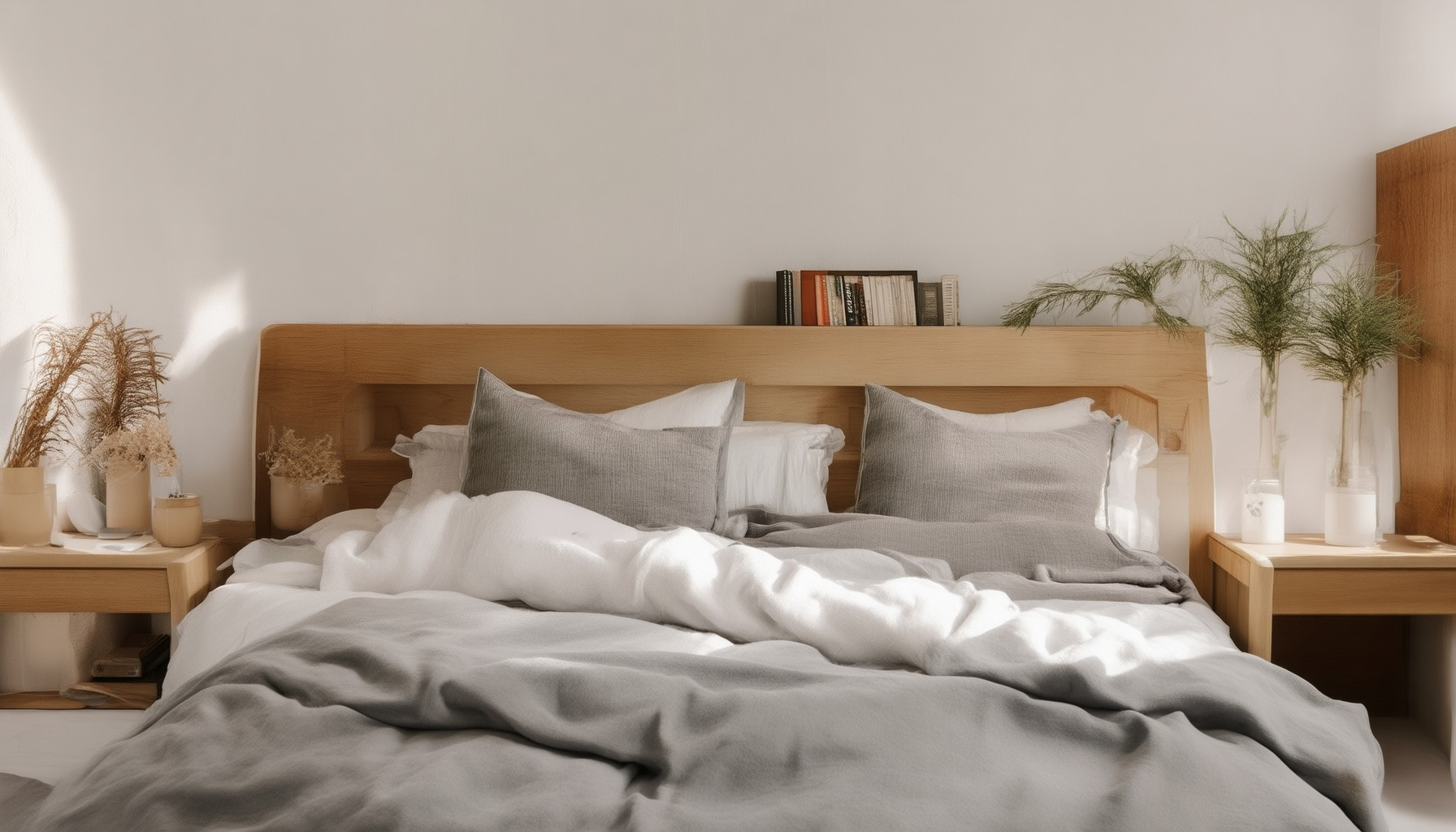



0 Comments